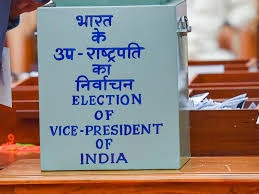Following the unexpected resignation of Vice President Jagdeep Dhankhar on July 21, citing “medical advice,” the contest for India’s next Vice President is now underway. The NDA has announced Maharashtra Governor CP Radhakrishnan as its candidate, while the INDIA bloc has nominated former Supreme Court judge B Sudershan Reddy. Originally scheduled for 2027, the 17th Vice Presidential election will now be held on September 9.
Historically, of the 16 Vice Presidential elections held so far, four were won uncontested, three due to disqualification of rival nominations, and one due to absence of an opponent.
Vice President Election Process
The Vice President is elected by an electoral college consisting of members of both Houses of Parliament. Voting follows the system of proportional representation through a single transferable vote and is conducted via secret ballot.
Candidates must be Indian citizens aged 35 or above and cannot hold any office of profit under the Government of India, state governments, or local authorities. The Vice President serves a term of five years. However, per Article 68(2) of the Constitution, in case of resignation, death, or removal, a new election must be held promptly to fill the vacancy.
Candidates from South India
Both NDA and INDIA bloc have chosen candidates from South India. CP Radhakrishnan hails from Tamil Nadu, while Sudershan Reddy is from Andhra Pradesh. Andhra Pradesh Chief Minister N. Chandrababu Naidu has welcomed Radhakrishnan’s nomination. DMK, an ally of the INDIA bloc, emphasized the ideological significance of Sudershan Reddy’s candidature, highlighting respect for constitutional values.
Electoral Strength and Outlook
The electoral college comprises 788 members from the Lok Sabha and Rajya Sabha, with six vacancies bringing the effective strength to 782. A candidate needs more than half the votes, or 392, to win.
The NDA currently holds 422 MPs, including nominated members likely to support their nominee, with 293 in the Lok Sabha and 129 in the Rajya Sabha. The INDIA bloc’s strength is around 300 MPs, including parties such as Congress, Samajwadi Party, DMK, Shiv Sena, NCP, CPI(M), RJD, JMM, AAP, and IUML.
The contest is set to be closely watched, as both blocs aim to secure a candidate who reflects constitutional values and regional representation.

